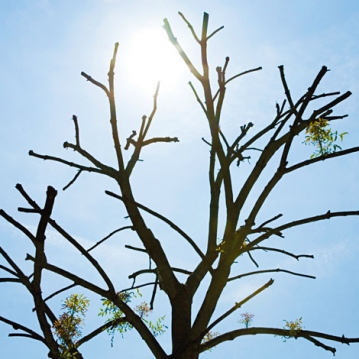
While it’s easy this time of year to just daydream about next year’s garden, there are some chores to be done. Late winter is the perfect time for one of my favorite garden tasks: pruning fruit trees.
Most gardeners are nervous about making cuts to their precious trees, and, consequently, they prune only a little, and poorly, or not at all. However, pruning isn’t rocket science. You just need to follow some basic principles and get out there and start cutting.
Pruning New and Old Trees
When pruning young trees, the goal is to create a strong branch structure and proper angles for future growth. Prune to create three to five branches that have a 45- to 60-degree angle from the main trunk. These branches should ideally be evenly arranged around the trunk and at least 2 to 3 feet off the ground. You can spread the branches when they’re young to grow at the right angle. Hang fishing weights with nylon wire on the branches for one growing season, or use wooden "spreaders" to push the branches apart to create the optimal angle.
For established trees, always remove dead, diseased, broken and competing branches back to the trunk or a main branch first. For a neglected tree, try not to prune more than 25 percent of the tree in any given year. Too much pruning can cause lots of sucker growth that year. The exception would be a very old tree that needs to be stimulated to put out new growth. The goal is to have large diameter limbs near the bottom of the tree and smaller ones at the top. Don’t prune limbs flush to the trunk or main branches. Leave the branch collar (raised area near the trunk or main branch) intact so the branch can quickly heal and protect the wound.
Basic Pruning Cuts
Keep these basic tips in mind:
Use sharp pruning shears for any cuts on branches smaller than 1/2 inch in diameter. Use loppers or a pruning saw for larger diameter wood.
Cut thin diameter branches 1/4 inch above a bud that is facing in a direction you want the new branch to grow. Make the cut on an angle to shed water and promote faster healing.
Horizontal branches produce more fruit than vertical ones. Prune vertical branches back to a main stem or trunk.
Prune moderately every year to keep the tree healthy and fruiting consistently. The tendency of some fruit trees to bear in alternate years can be caused by insufficient pruning.
























